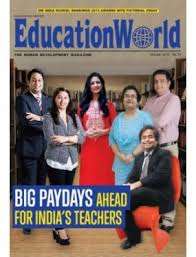- Innovation
Inspiring Inclusive Innovation
Rotman professor, Sarah Kaplan, champions inclusive product and service innovation—for social good and competitive advantage
The idea that business innovations should appeal equally to everyone seems obvious, because it makes good business sense. Yet, in discussing Inclusive Business Innovation, her new program at the University of Toronto’s Rotman School of Management, Professor Sarah Kaplan tries to show how the commercial aspect follows from being more inclusive. “I sometimes resist the business case argument, because it downplays the importance of just being good for the community. But Inclusive Business Innovation is about win-wins.”
Unfortunately, this clear business and social win often does not happen. Kaplan shares several sorry examples: The Apple Card that at its launch offered a man 10 times the credit limit that it offered his wife, despite their equal circumstances; the original Fitbit that failed to work on dark skin—“You can imagine the designers and the venture capitalist investors, all trying it on their wrists and thinking it was just fine;” women being more likely to get injured in a car accident because seat belts, car seats, and airbags are just not designed for women’s bodies.
“These products could have worked so much better,” says Kaplan, “and risked less downside for so many more people, and made many more sales, if they had been designed in an inclusive way.” Take the car industry: not only are women buying more cars themselves, but women often have the deciding vote on the choice of the family car. Inclusive design is for the good and makes commercial sense.
What Rihanna was able to do is tap into a whole market that was out there waiting to be had
Rihanna’s Fenty Beauty cosmetics brand shows the way. Launched in 2017 to offer cosmetics that were true to every conceivable variety of skin tone, at affordable prices, it was instantly popular and is now a multi-billion-dollar global success. “What Rihanna was able to do is tap into a whole market that was out there waiting to be had,” notes Kaplan. “When I talk about inclusive business innovation, I'm talking about massive market opportunities that companies are missing out on because they are not thinking about all the different kinds of people that they could be designing for.”
Another example is Ellevest, Sallie Krawcheck’s FinTech investment and asset management platform. “Designed with women's income, women's approaches in mind, [Ellevest] is a wildly successful startup in a space that is not being addressed by the big incumbent companies,” observes Kaplan, who believes Fin Tech and the banking sector more broadly to be ripe for inclusive innovation.
Encouraging an inclusive innovation mindset
“The diversity, equity and inclusion conversation—and a lot of the backlash—has been focused on the talent management side of things,” says Kaplan. “We’re helping leaders shift to the ‘go to market’ conversation. One about product, service and marketing strategies.” Fostering inclusive innovation is not just a DEI issue. It is more about leadership, strategic purpose, and competitive advantage. It includes both innovation in design and in how sales are made. It also strengthens brand reputation.
………………………………………………………………………………………………………..
Join Rotman Executive Programs’ inspiring Inclusive Business Innovation program
Dates: September - December 2025
Format: Asynchronous online ⃒ Length: 4 modules x 8-10 hours
………………………………………………………………………………………………………..
“It's a big mindset shift in terms of really thinking about inclusion as an innovation challenge,” suggests Kaplan. A leadership challenge, and also a change in corporate mindset, so that people throughout the organization are empowered to contribute. A first defense against poor product design must be internal—ensuring everyone’s views are heard. The second defense is listening to the marketplace.
Leadership levers for inclusive innovation
Having a broad and deep understanding of the market to be served is the route to any business success—broad in the sense of exploring all potential market avenues. For this, data is key. This means “really looking at your data in a new way, disaggregating the data, paying attention to the variation, looking at how things might be different, whether it's across genders, across race, or thinking about disability.” That’s why Rotman’s Inclusive Business Innovation program uses the Institute for Gender and the Economy’s proprietary ‘Gender Analytics methodology’ as an essential tool to make this happen. “We show people how to avoid just looking at the averages,” she says, “and instead to look at the variation, and at different subgroups. It’s important to use analytics to tell what's going on in the whole marketplace.”
I truly believe that part of this process is about thinking about hierarchy in a very different way, hierarchy of insight, experience, ideas
Another important lever explored in the program is Human-Centered Design—sometimes known as Design Thinking— with its five phases: empathize, define, ideate, prototype and test. Kaplan describes as “designing with your community, not designing for your community.” This entails not just using a focus group to test a product idea but bringing people into the actual design process. “Rather than assuming you know what is needed,” she said, “you can collaborate with different people to find what might work better for them.”
“The important thing about inclusive business innovation is that our focus is on making sure that the criteria used are informed by the communities themselves and by their needs.” It is essential to ask: Who is included in the emphasize and define stage? Who is developing the prototypes? How are they being tested?
Barriers to inclusive innovation
A barrier to inclusive innovation, and indicative of our times, is that everyone wants everything in a hurry. Yet, effective human-centered design involves doing the hard work of truly engaging with customers—this can be messy. Kaplan encourages “people to do the deep version of design thinking, not the post-it note version. It’s not just a one-off workshop.”
A regular complaint Kaplan hears from would-be inclusive leaders is that they don’t have the data. Or at least not the right data. “This is because a lot of organizations don't even think about it in the right way yet,” she reflects. “They just don't understand what opportunities they're giving up.” The answer is simple, “Go out and gather the data.” If you don’t have disaggregated data, “You can find other data that could help you at least estimate. Sometimes you just need a creative way of putting it together.”
Another roadblock is around the ethics of collecting sensitive data to do with gender and race. This is a real concern, yet Kaplan’s course delves into the ways that, with investment of time and effort, many organizations have found ways to do ethical data analytics.
Another big barrier is the idea that women, or people of color, or people with disabilities are just a niche market. “We often can't even see the potential of being more inclusive as actually also being good for everyone,” observes Kaplan, quoting the example of audiobooks which were originally developed for a niche—people with visual impairment—and are now the largest growth market in book publishing. “We’re talking about a wholesale change in mindset.”
Opportunities for meaningful organizational change
Organizational culture and practices need to change too. “If you really want to pursue innovative opportunities, you are going to have to transform your organization,” declares Kaplan. “I truly believe that part of this process is about thinking about hierarchy in a very different way, hierarchy of insight, experience, and ideas.”
Organizations need to move away from top-down management to create more openness and enough freedom for people at all levels to speak up, to encourage collaboration and information sharing across the organization, and to build the capacity to engage with communities. “To really do inclusive business innovation, you put marginalized people right at the center,” says Kaplan.
Finally, she stresses how leading transformation—pioneering new territory for their organization—can present an opportunity for leaders to distinguish themselves. “One of the things that we emphasize in the course is that by pushing the boundaries, by innovating for everyone, by creating new market opportunities that people hadn't seen before, people can advance their own careers. It can be a centerpiece of your own personal career growth trajectory. You can be that transformational leader.”
………………………………………………………………………………………………………..
Sarah Kaplan is Founding Director of the Institute for Gender and the Economy (GATE), Distinguished Professor of Gender & the Economy, Professor of Strategic Management and Fellow of the Lee-Chin Family Institute for Corporate Citizenship at the University of Toronto’s Rotman School of Management. Formerly a professor at the Wharton School, University of Pennsylvania (where she remains a Senior Fellow), and a consultant and innovation specialist for nearly a decade at McKinsey & Company, she focuses on applying an innovation lens to social challenges such as gender inequality. She regularly advises corporations, governments and agencies on policies related to board diversity, board governance, care work, employment, pay equity, gender-based analysis and other topics..
………………………………………………………………………………………………………..
Join Rotman Executive Programs’ inspiring Inclusive Business Innovation program
Dates: September - December 2025
Format: Asynchronous online ⃒ Length: 4 modules x 8-10 hours ………………………………………………………………………………………………………..
Rotman School of Management is Canada’s leading business school and has Canada’s largest group of management faculty. It is home to some of the most innovative research institutes in the world
ARTICLES YOU MIGHT LIKE
VIEWPOINT
Cognitive neuroscientist, Lynda Shaw, explains how to understand and support intrapreneurs
DEVELOPING LEADERS QUARTERLY MAGAZINE AND WEEKLY BRIEFING EMAILS


































